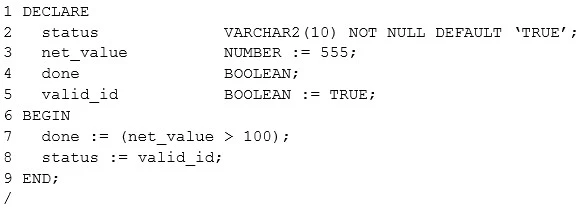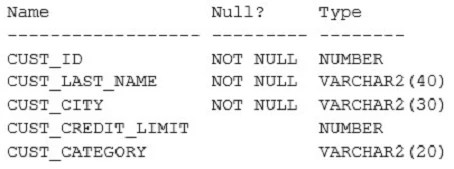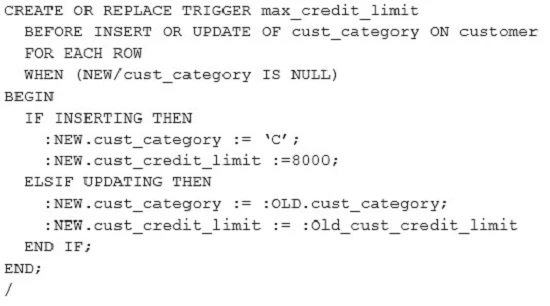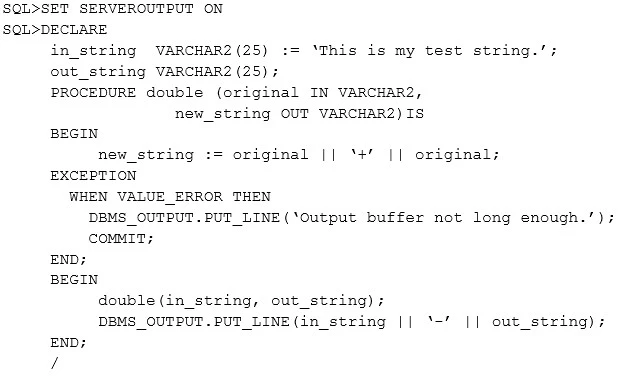The correct definition of the persistent state of a packaged variable is a public variable in a package specification whose value is consistent within a user session. This means that the value of the public variable remains the same throughout the duration of that particular user's session, providing a consistent state for the session without affecting other sessions.

Which line in the above code would result in errors upon execution?
In line 8, the code is attempting to assign a BOOLEAN value to a VARCHAR2 type variable. In PL/SQL, this is not allowed since the two types are incompatible. This will result in an error. Specifically, PL/SQL will throw an error like 'PLS-00382: expression is of wrong type' when it encounters this type of assignment.

Examine the following trigger code:

What is the outcome when the above trigger is compiled?
The correct answer is that it gives an error because the WHEN condition is not valid. The correct syntax for the WHEN condition in the trigger should include a semicolon at the end of each assignment statement inside the IF and ELSEIF blocks. Additionally, the condition `NEW/cust_category IS NULL` is not correctly framed; it should be written as `:NEW.cust_category IS NULL`. Therefore, the trigger will not compile successfully.
Reuse of parsed PL/SQL code in the shared SQL area minimizes parsing overhead, enhancing performance. Also, PL/SQL procedures can call external procedures or functions written in other programming languages, such as Java, offering flexibility in integration.

View the Exhibit and examine the code.

What is the outcome on execution?
The procedure attempts to concatenate the string 'This is my test string.' with itself and a '+', resulting in a string that is longer than 25 characters, which leads to a VALUE_ERROR being raised. The exception handler in the procedure catches this error, prints 'Output buffer not long enough.', and then the main block continues execution, resulting in 'This is my test string.-' being printed. Thus, it displays 'Output buffer not long enough. This is my test string.-.'